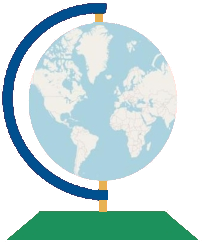
Related items loading ...
Section 1: Publication
Publication Type
Thesis
Authorship
Gibson, Carolyn
Title
From Causes to Consequences: Understand the impacts of permafrost thaw as an integrated system
Year
2020
Publication Outlet
University of Guelph - Theses and Dissertations
DOI
ISBN
ISSN
Citation
Gibson, Carolyn (2020) From Causes to Consequences: Understand the impacts of permafrost thaw as an integrated system, University of Guelph - Theses and Dissertations,
https://hdl.handle.net/10214/25666
Abstract
Understanding the causes and consequences of permafrost thaw is one of the key challenges facing northern communities and researchers today. With northern environments warming at twice the global average, climate change is driving widespread changes in permafrost environments that provide the foundation for ecological-, social-, economic-, and human-wellbeing. In this thesis I aim to enhance the understanding of permafrost environments as an integrated system that considers humans and communities as part of the permafrost system. In chapter 1, I conduct a scoping review of permafrost peer-reviewed literature related to the consequences of permafrost thaw. I show that over 95% of the literature focuses on permafrost thaw impacts to ecosystem processes and that over 75% of northern communities lack permafrost thaw related measurements within 75km of them. In Chapter 2, I quantify the consequences of permafrost thaw on land-users. I show that permafrost thaw accounts for a third, and potentially as much as a half of all hazards that land-users faces when on the land. In chapter 3, I respond to an emergent challenge from chapter 2 about the need for permafrost vulnerability data at a scale that is more relevant to community-level planning. I map the spatial distribution of terrain vulnerable permafrost thaw at a scale that is relevant to community adaptation planning. Data generated in chapter 3 are then used in chapter 4 where I assess how the degree of thermokarst formation within permafrost peatlands varies across a latitudinal (climatic) gradient (i.e., space-for-time substitutions) to make inferences about how thaw will progress in a warming climate. I show that at northern latitudes, peatland permafrost remains climate-protected with relatively little thaw. Conversely, I show that at the southern latitudes, widespread thaw has occurred with areas of lower elevation being most vulnerable. Overall, the findings of this thesis show the importance of considering communities and their needs at the forefront of any permafrost related study. When done, not only does an enhanced and enriched understanding of the permafrost system emerge, but the knowledge and information generated is more easily accessed and applied by communities and decision makers.
Plain Language Summary

 GWFNet
GWFNet Master
Master Data
Data Research
Research Map
Map
 Advanced
Advanced Tools
Tools
 . . .
. . .
 Metadata Editor
Metadata Editor
 Record List
Record List
 Alias List Editor
Alias List Editor
 Legacy sites
Legacy sites